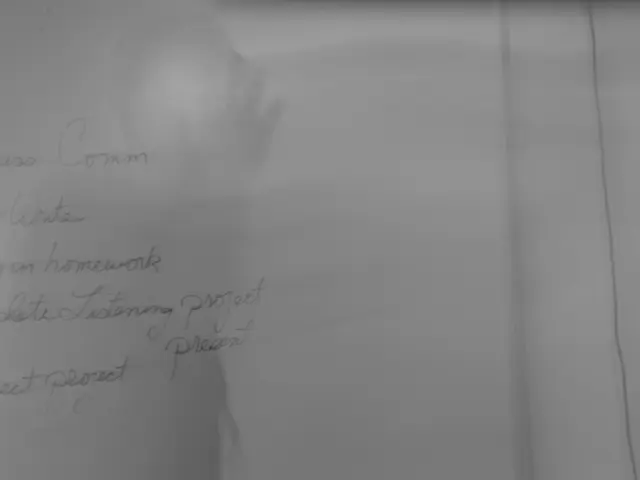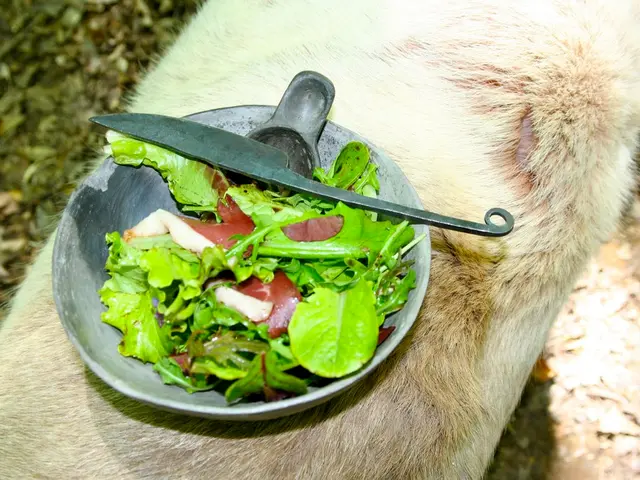Strengthening your core beyond the traditional sit-ups? Try this alternative Pilates exercise instead.
In the world of Pilates, the Hundred is a beloved exercise that focuses on building abdominal strength and improving spinal support. Millie Shiers, a seasoned Pilates instructor at Core LDN in southwest London, offers guidance on performing the Hundred correctly and provides modifications to cater to various abilities.
Correct Techniques
To execute the Hundred effectively, follow these steps:
- Begin by lying on your back with knees drawn into your chest.
- Engage your abdominal muscles to curl your head, neck, and shoulders off the mat, keeping your chin slightly tucked to avoid strain.
- Position your legs at about a 45-degree angle, heels together, toes apart, in what's known as a Pilates stance.
- Scoop your deep abdominal muscles to support your spine and maintain a strong core throughout the exercise.
- Lift your arms to hip level and pump them vigorously up and down, coordinating five pumps on an inhale and five on an exhale.
- Ensure your back remains lengthened, avoiding overarching or sagging.
Modifications to Reduce Neck Tension
For those experiencing neck discomfort, consider these modifications:
- Keep your head gently resting on the mat while still engaging your abs.
- Bend your knees to a tabletop position, reducing lower back strain and making core engagement easier.
- Place a small towel or cushion under your neck for additional support.
- Focus on initiating movement from your abs rather than pulling on your neck with your hands or head.
Progressions to Build Abdominal Strength
As your core strength improves, progress to:
- Gradually lifting your head and shoulders from the tabletop position.
- Lowering your legs from tabletop to a 45-degree angle.
- Increasing the number of arm pumps as endurance builds.
- Incorporating full Pilates sequences, such as the Roll-Up and Pelvic Curl, to complement the Hundred and support core strength and spinal mobility.
Key Points to Remember
- Maintaining core engagement throughout and avoiding tension in the neck by correct head positioning are essential to performing the Hundred safely and effectively.
- Progress gradually, always listening to your body and modifying as necessary to prevent strain.
- The Hundred requires a lot of abdominal strength, so modify the exercise by keeping your legs in the tabletop position if needed.
- The Hundred builds heat in the body due to fast pulses, making it useful for warming up in a Pilates class.
- Practice lifting your head and chest and bringing your arms parallel to the floor before lowering back down to prepare for the Hundred.
- Incorrect execution of the Hundred can result in too much tension in the neck and shoulders, so focus on engaging your abs and maintaining proper head positioning.
- One progression option for the Hundred is to bring your legs into the starting position from the floor.
- Changing the angle of your straight legs during the Hundred will affect how easy or hard it feels.
- Millie Shiers suggests breaking the Hundreds into two sets of 50 counts until clients can sustain the full 100 counts without any neck tension.
By mastering the Pilates Hundred, you'll strengthen your core, enhance your spinal support, and enjoy the benefits of Pilates breathing and improved flexibility.
- Incorporate the Hundred, a beloved exercise in the field of health-and-wellness and fitness-and-exercise, into your workouts to strengthen your abdominal muscles and improve spinal support.
- After mastering the correct techniques and modifications for neck tension, consider progressions like raising your head and shoulders or lowering your legs to build more abdominal strength in your health-and-wellness routine.




